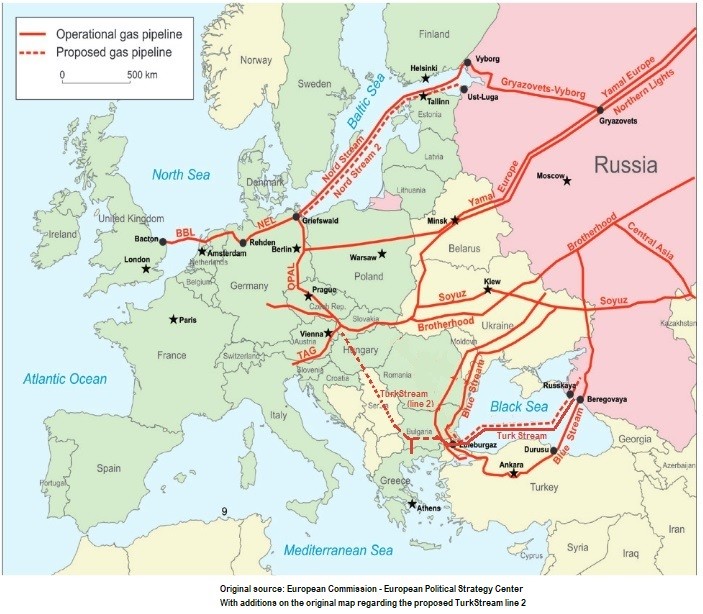
Russian energy-related buffer zones in Europe
Russia’s security objectives in relation to its energy capacity are expressed primarily through the materialization of two major natural gas pipeline systems, the Nord Stream 2 and the TurkStream.
Observing the map with the combined routes of the two Russian pipelines, one can see that the countries they enclose are identical to the limits of the former Eastern Block that was under Russian influence before the fall of the Soviet Union.
Russian security objectives include creating a buffer zone against the pressure Kremlin feels it faces from NATO in Europe. Such a resolve, regarding the critical role of a Russian buffer zone in Europe, has been dominating Kremlin's strategic planning since the early 1990s with Vladimir Putin characterizing the fragmentation of the Soviet Union, “the greatest geopolitical catastrophe of the 20th century".
The Nord Stream 2 is designed to carry 55 bcm/y of natural gas from the Russian port of Ust-Luga in the Leningrad region, across the Baltic Sea to Germany in the Greifswald area close to the exit point of Nord Stream 1. There, it connects with the existing OPAL pipeline running across the eastern part of Germany to the Czech Republic.
The TurkStream pipeline starts from Russkaya compressor station near Anapa in Russia's Krasnodar region, crossing the Black Sea to the receiving terminal at Kıyıköy in Turkey. It consists of two lines with a capacity of 15 bcm each. The first line is already in operation delivering 15 bcm of gas to Turkey. The second line is designed to run from Turkey to Bulgaria, across Serbia to Hungary and Slovakia.
The combined route of the two pipelines encloses the eastern (!) part of Germany towards the Czech Republic, down to Slovakia, Hungary, Serbia and Bulgaria. Far from random, the path of the two pipelines offers Russia a zone of influence related to the critical element of energy, in areas that according to the post-Soviet Kremlin reasoning, is crucial for Russia's defense against the west.
Both pipelines, the Nord Stream 2 and the second line of the TurkStream, have been subject to sanctions by the United States through the 2020 National Defense Authorization Act. Washington sees the two projects as what they are: A part of Kremlin’s strategy to create national and regional dependence on Russian energy flows and leverage this dependence to exert political, economic, and military influence in Europe.
Its time EU makes the same realization...

Strategy International, Senior Consultant on Energy Security in the Eurasian region.
4yEνδιαφερον πολύ Μιχάλη. Μπράβο!
Thanks Michalis for sharing your post.